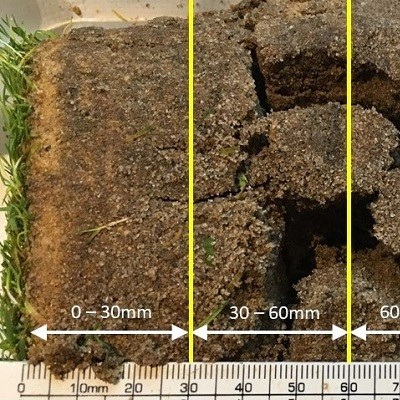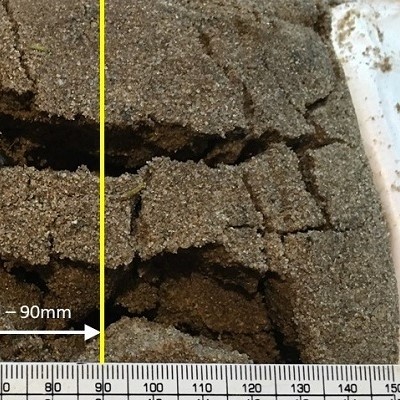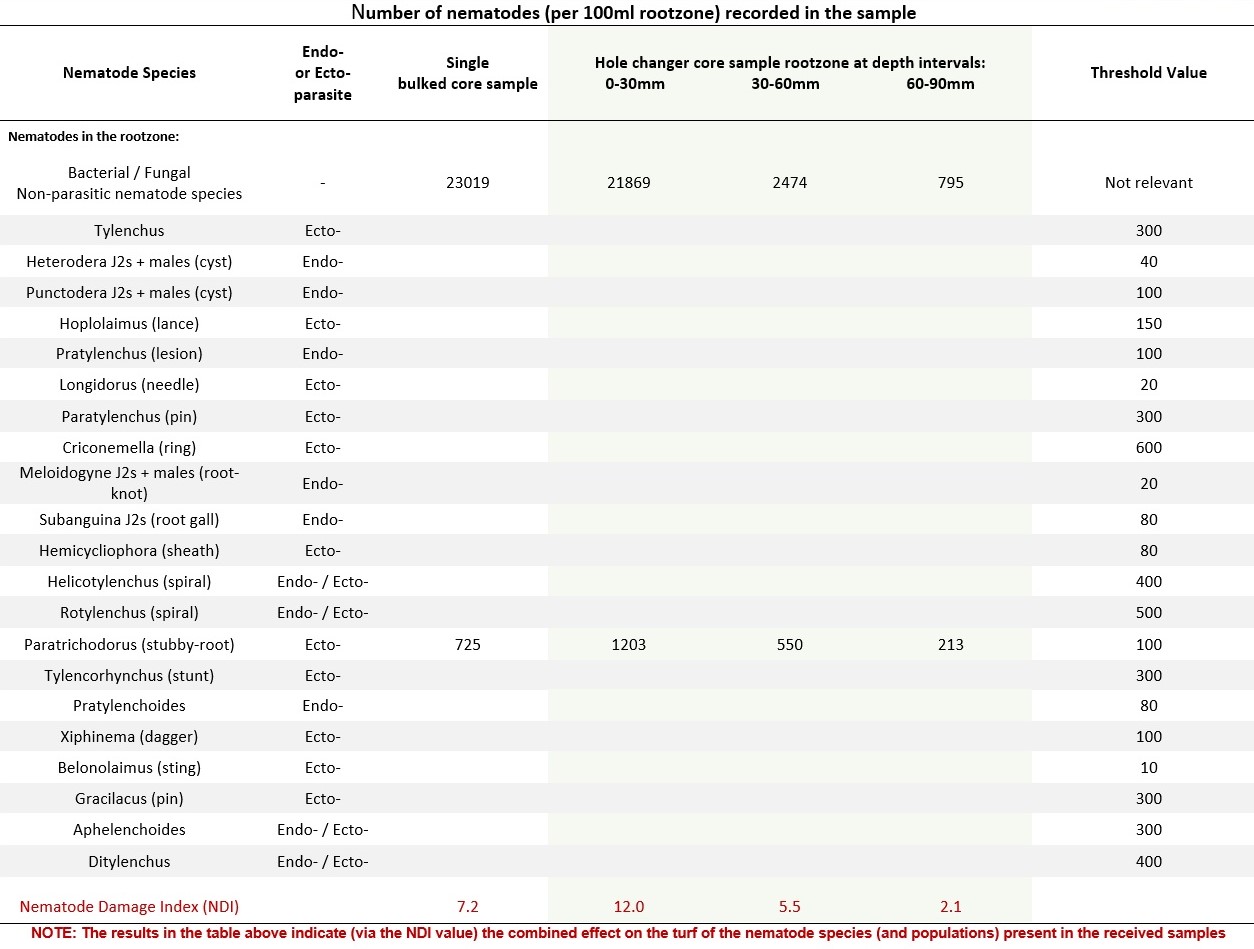



It is possible to obtain a more detailed analysis of free-living parasitic nematode populations that are present in intact rootzone profiles. Assessment of nematode types & populations at different depth intervals can identify more clearly a recurring problem and help to target management options.
These assessments can be adapted to fit your requirement but in general, an intact rootzone profile is sectioned at specific depth intervals and each depth interval is assessed for nematode type and population.
Results are generally provided in 3 to 4 days but when analysis takes longer, a preliminary result will be provided.
Additional information
Some nematode species tend to favour one grass type and their populations will be affected by, or can specifically influence, the sward composition. Alternatively, depending on the type of sward and depth of root development, different nematode species populations can dominate at varying depths in the turfgrass rootzone. Some nematode species will preferentially feed on the root tip and damage not only the root development but also the root function. Other species can cause extensive galling of Poa roots close to the base of the turf and infected swards can decline rapidly if the problem is not realised and general abiotic stresses increase.
The routine, free-living nematode analysis will provide an overview of what nematode species are present and what their relative numbers are in the sample. However, the result obtained will vary depending on the depth to which the sample cores are taken. If the sampled depth remains the same each time you remove cores for analysis, it is possible to compare the recorded population data over time. However, using the results of this general assessment, it is not possible to say where the different nematode species are accumulating or reeding in the rootzone.
By removing intact rootzone profile samples and assessing carefully separated rootzone depth intervals, any developing problems associated with specific nematode species can be detected and, if required, studied over time.
We have been aware of the spatial distribution of turf parasitic nematodes for some time (both across a specific turf area and with depth in to the rootzone), but to have some quantitative data of species populations through the rootzone, can help to target management options that are aimed at reducing the detrimental impact of nematodes on turf health.
A golf hole changer core sample is a useful size to use for this assessment at different depth intervals. The intact rootzone profile can be sectioned as required in to 3 or more depth intervals, depending on how specific you want the analysis to be. The more intervals that are assessed, the clearer it is to identify the relative nematode species distribution in the profile. Examples of this type of assessment are shown here where the received core sample has been sectioned at 3, 4, 5 and 6 depth intervals.
Free-living Nematode Analysis at 3 depth intervals through the rootzone
In this example, two samples were taken from the same area, one composed of ten 15mm diameter cores (bulked core sample) and the other a 90mm hole changer core whose rootzone was separated in to three depth intervals (0-30mm, 30-60mm and 60-90mm). These were assessed and the results are shown in the table below. The only parasitic nematode present was the Stubby Root nematode.
Looking initially at the bulked core sample assessment, the result identified a high population of the Stubby Root nematode (725 nematodes / 100ml rootzone). This is clearly an important result because it identifies the presence of a specific root parasitic nematode in numbers that are likely to be causing detriment to the plant. By looking at the washed roots, it is clear to see the deformity caused and to appreciate the detrimental effect on root function. However, the analysis result gives no indication of where the Stubby Root nematode population may be focussed in the rootzone.
If we now look at the hole changer core analysis results with depth, we can see that the recorded population decreases quite rapidly. The extremely high Stubby Root nematode population that is present in the top 30mm of the rootzone is halved when we get to 30-60mm depth and halved again at 60-90mm. By taking these analysis results and the observations of root deformity at depth, we can more confidently conclude that it is the direct effect of the high nematode population that is causing the root damage, impacting root function and leading to the symptom development through the turf.

This extended analysis work can not only be used to identify the relative population change of one nematode species with depth (as above) but, where present, can also be used to show the relative distribution of several nematode species through the rootzone.
If the received sample is not suitable for the requested analysis, you will be contacted so that the work can be discussed before any assessment is completed.
Please see additional information on sending samples for fungal disease analysis and current fees. If you are in any doubt about what to send, please contact me.